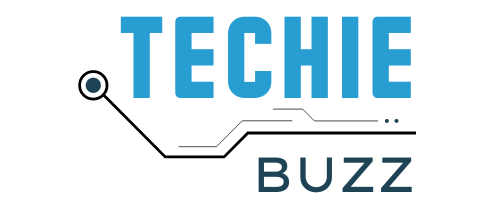In the world of remote work, the winds of change are not just blowing; they’re reshaping the very fabric of how we perceive and practice work. As we enter into the journey from 2024 into 2025, the landscape is defined by transformative trends that extend far beyond the confines of traditional office spaces. A staggering 67% increase in remote work adoption since 2020 signals a seismic shift in the global workforce, underscoring the need to explore the multifaceted aspects steering this evolution.
From the rise of bossware to the embrace of hybrid work models, the statistics paint a vivid picture of an interconnected tapestry. Where technology, culture, and the human element converge to redefine the future of work. Let’s unravel the threads of these trends and get into a world where virtual collaboration, digital nomadism, and a focus on well-being are not just buzzwords but the guiding principles of a new era in the way we work.
List of Remote Work Trends for 2024-2025
1. Hybrid Work Models

As the professional landscape undergoes a metamorphosis, the ascendancy of hybrid work models stands out as a defining trend from 2024 to 2025. Organizations are navigating away from the rigidity of fully remote setups, embracing a more dynamic approach that seamlessly integrates in-office and remote work. This nuanced model empowers employees to curate their work environment based on personal preferences and job requirements.
The emphasis is on adaptability, recognizing that a one-size-fits-all approach is no longer viable in the modern workplace. With a symphony of flexibility and adaptability, the hybrid model heralds an era where work is not a place but a fluid experience tailored to individual needs.
2. Mental Health and Well-being Programs
In the interconnected world of remote work, where the lines between personal and professional life often blur, the spotlight on mental health and well-being has never been more glaring. Beyond statistics, the narrative unfolds around a collective awareness that the isolation inherent in remote work demands proactive measures.
Forward-thinking organizations are championing the cause by implementing comprehensive mental health and well-being programs.
These initiatives extend beyond token gestures, providing tangible resources and fostering a culture that places a premium on work-life balance and mental wellness. It’s a paradigm shift where companies become not just employers but guardians of their employees’ holistic well-being.
3. Bossware and Employee Productivity

Different types of bossware signal a paradigm shift in how companies approach remote work management. Employers are increasingly recognizing the need for tools that provide visibility into employee activities, especially in a dispersed work environment. This is not just about monitoring for the sake of control. It’s about optimizing workflows, identifying bottlenecks, and fostering a culture of accountability.
4. Ethical Considerations in Employee Monitoring
Use of computer surveillance software raises ethical concerns related to privacy and trust. Striking the right balance between monitoring for productivity and respecting employees’ privacy is crucial. The statistics mentioned here indicate a correlation between the use of surveillance tools and increased productivity, but it’s essential to approach this with caution.
Controlio, as a leading player in this space, emphasizes the importance of transparency and consent. Ensuring that employees are aware of the monitoring practices and the specific data being collected fosters a culture of trust. This aligns with the broader conversation around the ethical use of technology in the workplace.
5. Shifting Work-Life Balance

The traditional concept of a fixed workday is evolving, giving way to a more flexible approach. Remote work has empowered employees to take control of their schedules, leading to a shift in how we perceive and prioritize work-life balance. They contribute to this shift by focusing on outcomes rather than micromanaging hours worked.
The software provides a comprehensive view of employee performance, allowing employers to assess productivity based on results rather than time spent in front of a computer. This aligns with the growing recognition that flexibility and autonomy contribute to a healthier work-life balance.
6. Decentralized Talent Acquisition
The geography of talent acquisition is undergoing a radical transformation as remote work liberates hiring processes from physical constraints. In the unfolding narrative of 2024 to 2025, companies are rewriting the rules, tapping into a global talent pool without the shackles of relocation. This trend is more than a logistical shift; it’s a strategic recalibration of recruitment strategies.
The focus now shifts from proximity to a physical office to a profound emphasis on skills and competencies. As decentralized talent acquisition takes center stage, the recruitment landscape becomes a dynamic canvas where diversity and proficiency shape the future composition of teams.
7. GDPR Employee Monitoring

Implementation of GDPR employee monitoring tools has far-reaching implications for businesses, especially those operating within the European Union. GDPR places stringent requirements on the collection and processing of personal data, and this extends to employee monitoring practices.
8. Emphasis on Results-Based Performance
Traditional methods of performance evaluation, centered around hours worked, are giving way to a results-oriented approach. Remote work has necessitated a shift in how we measure productivity. Companies are focusing on key performance indicators (KPIs) and outcomes, enabling employees to take ownership of their work and contribute meaningfully to organizational goals.
9. Digital Nomadism

Remote work has given rise to the concept of digital nomadism, where individuals leverage technology to work from various locations globally. This trend has implications for both employers and employees. Companies are adapting policies to accommodate a geographically dispersed workforce, while employees are exploring new ways to balance work and lifestyle through location independence.
Conclusion
As we navigate the ever-changing landscape of remote work, it’s evident that the trends shaping its future are both transformative and challenging. Adopting tools can be a strategic move for companies aiming to strike the right balance between productivity and employee well-being. By staying abreast of these trends and leveraging technology responsibly, businesses can position themselves for success in the dynamic era of remote work from 2024 to 2025.
